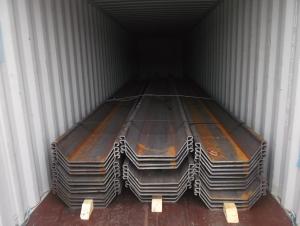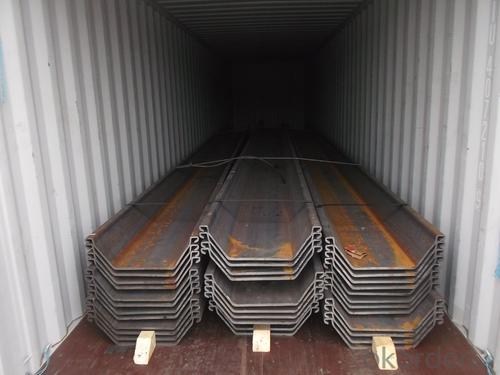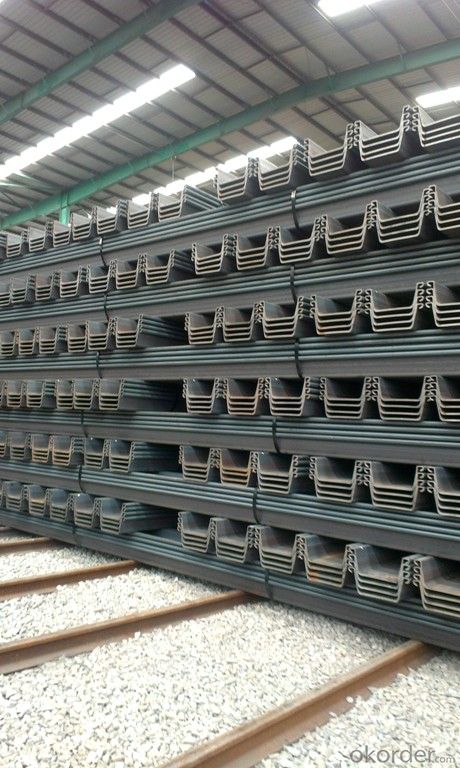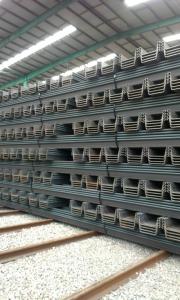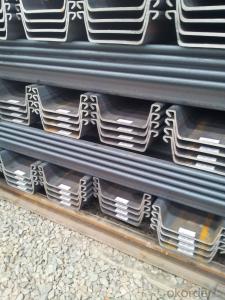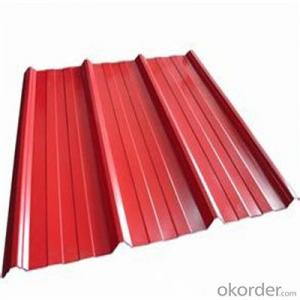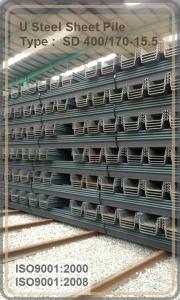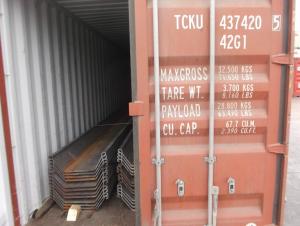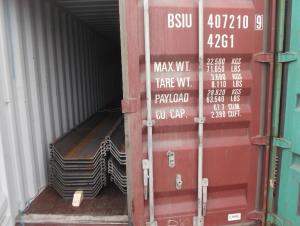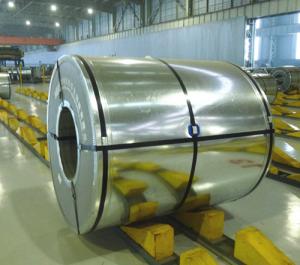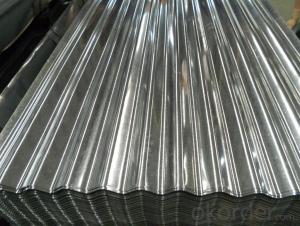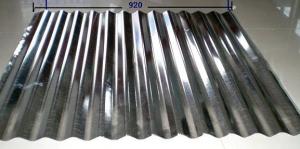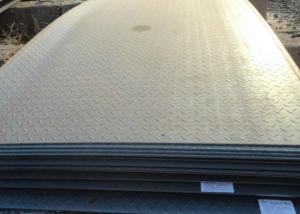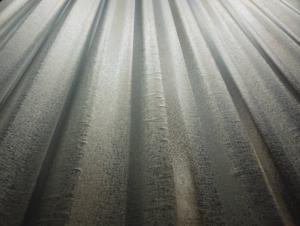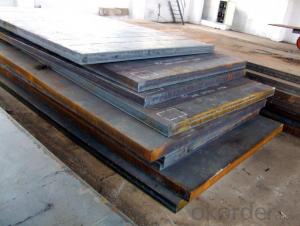U Steel Sheet Pile/ 400*85*8mm/ Export Steel Sheet Pile 400*85*8mm
- Loading Port:
- China Main Port
- Payment Terms:
- TT or LC
- Min Order Qty:
- 200 Piece/Pieces m.t.
- Supply Capability:
- 10000 m.t./month
OKorder Service Pledge
OKorder Financial Service
You Might Also Like
Quick Details Steel Sheet Pile
Place of Origin: China (Mainland)
Model Number:SD400/85-8
Material: Steel
Product name: Steel Sheet Pile
Steel sheet pile type: U-type
Steel sheet pile material: SY295
Steel sheet pile width: 400mm
Steel sheet pile height: 85mm
Steel sheet pile thickness: 8mm
Steel sheet pile length: 6m or 12m
Steel sheet pile loading: container , 20 ft or 40GP
Steel sheet pile used: temporary earth-retaining,temporary cofferdam works
Steel sheet pile weight: 60kgs / m
Packaging & Delivery
| Packaging Details: | packaging :by bulk . loading : container 20ft or 40GP |
|---|---|
| Delivery Detail: | stock ( more type has stock ) |
Specifications
Steel Sheet Pile 400*85*8mm
U Steel Sheet Pile
temporary earth-retaining/temporary cofferdam works/permanent structures
Export U Steel Sheet Pile 400*85*8mm
Product Description
Steel Sheet Pile Usage
emporary earth-retaining, temporary cofferdam works and permanent structures
Steel Sheet Pile Type : SD 400/85-8
Type | Size | Per piece | Per Meter of pile wall | ||||||||
Width | Height | Thickness | weight | section area | section moment | section modulus | section area | section moment | section modulus | weight | |
mm | mm | mm | kgs /m | cm2 | cm4 | cm3 | cm²/m | cm4/m | Cm³/m | kg/m² | |
SD400/85-8 | 400 | 85 | 8 | 35.5 | 45.21 | 598 | 88 | 113 | 4500 | 529 | 88.80 |
SD400/100-10.5 | 400 | 100 | 10.5 | 48 | 61.18 | 1240 | 152 | 153 | 8740 | 874 | 120.10 |
SD400/125-13 | 400 | 125 | 13 | 60 | 76.42 | 2220 | 223 | 191 | 16800 | 1340 | 149.90 |
SD400/150-13.1 | 400 | 150 | 13.1 | 58.4 | 74.4 | 2790 | 250 | 186 | 22800 | 1520 | 146.00 |
SD400/170-15.5 | 400 | 170 | 15.5 | 76.1 | 96.99 | 4670 | 362 | 242.5 | 38600 | 2270 | 190.40 |
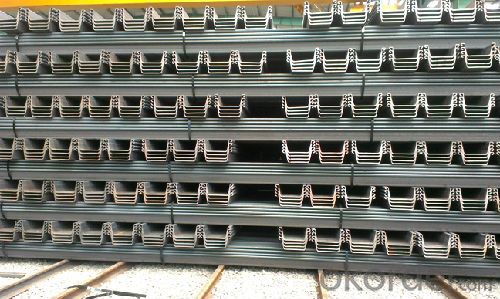
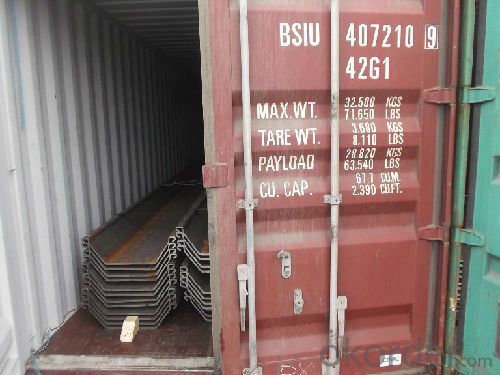
Packaging & Shipping
Packing : it use container to load , 6M use 20ft container ; 12M use 40GP container .
Our Services for Steel Sheet Pile
World leading manufacturer of cold-formed Sheet Pile.
Factory got a variety of quality certification : ISO9001:2000; ISO9001:2008.
Our products popular applicated for temporary earth-retaining, temporary cofferdam works and permanent structures
- Q: Are steel sheets suitable for sports stadiums or arenas?
- Yes, steel sheets are suitable for sports stadiums or arenas. Steel is a strong and durable material that can withstand heavy loads and provide structural support. It is commonly used in the construction of large-scale buildings like sports stadiums due to its strength, versatility, and cost-effectiveness. Additionally, steel sheets can be customized to meet specific design requirements and can be easily assembled on-site, making them an ideal choice for sports stadium construction projects.
- Q: What are the different surface finishes for steel sheets?
- Some of the different surface finishes for steel sheets include mill finishes, brushed finishes, mirror finishes, embossed finishes, and patterned finishes.
- Q: How do steel sheets perform in terms of thermal conductivity?
- Steel sheets have high thermal conductivity, meaning they are capable of conducting heat efficiently.
- Q: Can steel sheets be used for electrical motors?
- Yes, steel sheets can be used for electrical motors. Steel is commonly used in the construction of electrical motors due to its magnetic properties. The sheets of steel are typically used to create the core of the motor, which is responsible for generating the magnetic field necessary for the motor's operation. Steel has a high magnetic permeability, which means it can easily conduct and channel magnetic flux, making it an ideal material for this purpose. Additionally, steel is durable and can withstand the high temperatures and mechanical stresses that electrical motors may experience during operation. Therefore, steel sheets are often chosen as a reliable and cost-effective option for constructing electrical motors.
- Q: Can steel sheets be laminated with other materials?
- Yes, steel sheets can be laminated with other materials. Lamination is a process where multiple layers of materials are bonded together to create a composite structure. Steel sheets can be laminated with various materials such as plastics, polymers, wood, or other metals, depending on the desired properties and application requirements. This lamination process enhances the strength, durability, and overall performance of the steel sheets.
- Q: Can steel sheets be used for elevator cabins?
- Yes, steel sheets can be used for elevator cabins. Steel is a commonly used material in construction due to its strength, durability, and fire resistance properties. Steel sheets provide a sturdy framework for elevator cabins and can be customized to meet design requirements and safety regulations.
- Q: Can steel sheets be used for industrial machinery?
- Yes, steel sheets can definitely be used for industrial machinery. Steel is a widely used material in the manufacturing industry due to its exceptional strength, durability, and versatility. Steel sheets can be formed, machined, and welded into various shapes and sizes to meet the specific requirements of industrial machinery. Additionally, steel sheets offer excellent resistance to corrosion, impact, and extreme temperatures, making them ideal for heavy-duty applications. The use of steel sheets in industrial machinery ensures structural integrity, longevity, and enhanced performance, making it a preferred choice for many manufacturers in the industry.
- Q: Do the steel sheets have any specific certifications?
- The quality and compliance of the steel sheets are ensured through specific certifications. These certifications are typically granted by reputable organizations like the International Organization for Standardization (ISO) or specific regulatory bodies based on the country or region. The common certifications for steel sheets include ISO 9001 for quality management systems, ISO 14001 for environmental management systems, and ISO 45001 for occupational health and safety management systems. Furthermore, there might be industry-specific certifications, such as the American Society for Testing and Materials (ASTM) standards or the European Committee for Standardization (EN) certifications. These certifications guarantee that the steel sheets meet specific criteria for various attributes, including material composition, mechanical properties, and manufacturing processes.
- Q: Are steel sheets available in different hardness levels?
- Yes, steel sheets are available in different hardness levels.
- Q: How do you calculate the weight of a steel sheet?
- To calculate the weight of a steel sheet, you need to know its dimensions (length, width, and thickness) and the specific gravity of steel. Multiply the area of the sheet (length multiplied by width) by the thickness and then multiply the result by the specific gravity of steel (usually around 7.85 g/cm³). This will give you the weight of the steel sheet in grams or kilograms.
Send your message to us
U Steel Sheet Pile/ 400*85*8mm/ Export Steel Sheet Pile 400*85*8mm
- Loading Port:
- China Main Port
- Payment Terms:
- TT or LC
- Min Order Qty:
- 200 Piece/Pieces m.t.
- Supply Capability:
- 10000 m.t./month
OKorder Service Pledge
OKorder Financial Service
Similar products
Hot products
Hot Searches
Related keywords
